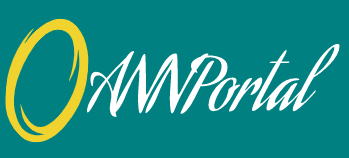Researchers reveal how the new device – created by therapeutic electronic company Theranica – significantly reduced migraine pain for more than 60 percent of study participants, compared with a sham treatment.
Dr. David Yarnitsky, of Technion Faculty of Medicine in Haifa, Israel, and colleagues recently reported their findings in the journal Neurology.
Migraines are recurring headaches characterized by a moderate or severe throbbing or pulsing pain, which often occurs on one side of the head. Sensitivity to light and sound may also arise with a migraine, as well as nausea and vomiting.
Migraines are estimated to affect around 12 percent of the United States population, and they are around three times more common among women than men.
When it comes to preventing or treating migraine, pain medications are often the first port of call. These include nonsteroidal anti-inflammatory drugs (NSAIDs) (such as aspirin and ibuprofen), triptans (including sumatriptan and rizatriptan), and beta-blockers. However, as with all medications, there is a risk of side effects.
Dr. Yarnitsky and colleagues believe that their new electrical stimulation patch could offer a non-drug alternative for people with migraine, after finding that it is just as effective as pain medication.
For their study, the researchers enrolled 71 adults with episodic migraine, all of whom were experiencing an average of two to eight migraine attacks every month.
Participants had not taken any medication to prevent migraine attacks for at least 2 months prior to the study, the team notes.
Subjects were allocated to one of two treatment groups. One group received treatment with the electrical stimulation patch, known as Nerivio, while the other group received a sham stimulation treatment.
Significant pain reduction with electrical stimulation patch
The Nerivio patch consists of an armband, rubber electrodes, and a chip. The wireless device is connected to a smartphone app. When instructed by the app, the device generates electrical pulses, which stimulate sensory nerves under the skin. This aims to prevent pain signals from reaching the brain.
Shortly after the start of a migraine, each participant was instructed to apply the Nerivio patch or the sham stimulation device to their upper arm. Different levels of stimulation were tested, and each treatment lasted around 20 minutes.
The researchers found that at the three highest levels of stimulation, 64 percent of individuals treated with the Nerivio patch reported a reduction in migraine pain by more than 50 percent in the 2 hours after treatment, compared with just 26 percent of subjects who received the sham treatment.
Additionally, the team found that at the very highest stimulation level, 58 percent of people who started out with moderate to severe migraine said that their pain was mild or had disappeared following Nerivio treatment, compared with only 24 percent of those in the sham treatment group.
Treatment was most effective when initiated within 20 minutes of a migraine starting, the researchers report. Pain was reduced by 47 percent when treatment was started early, compared with just 25 percent when treatment was started after 20 minutes.
Results ‘similar to those seen with triptan medications’
According to Dr. Yarnitsky, who is also a member of the Medical Advisory Board for Theranica, the Nerivio patch produced results “similar to those seen for the triptan medications for migraine.”
“These results need to be confirmed with additional studies, but they are exciting. People with migraine are looking for non-drug treatments, and this new device is easy to use, has no side effects and can be conveniently used in work or social settings.”
David Yarnitsky
Dr. Yarnitsky points to one limitation of the study, which is that many participants receiving the sham stimulation stopped before the required 20-minute treatment period.
“This may indicate that they knew the stimulation was not active, and thus they were no longer blinded to the study, which is a challenge in any sham stimulation study,” says Dr. Yarnitsky.
Source:medicalnewstoday.com
